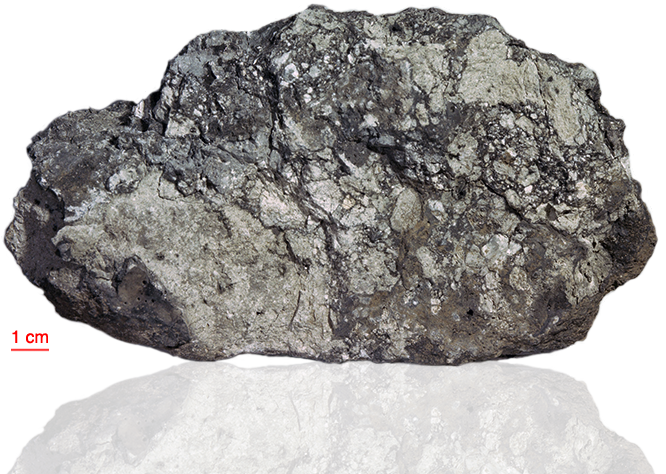
Fact sheet
60017 is a microbreccia composed primarily of well-rounded clasts of anorthositic gabbro, mosaically recrystallized anorthosite and large crystals of olivine set in a cryptocrystalline groundmass. The clasts frequently have a fine-grained rim due to reaction of the clast with the groundmass. The rock contains two dominant lithologies ~70% variolitic melt (rotation 1) and ~30% (mostly) dark aphanitic clasts (rotation 2). The variolitic melt consists of plagioclase clasts with interstitial mafic minerals, minor ilmenite, metallic iron, rare troilite, rare spinel and cryptocrystalline material. Spherulitic texture is often found. The dark matrix clasts are aphanitic and inhomogeneous.
The sample weighed 2102 grams before analysis and has not been dated.
Further details of this and other Apollo samples are here: http://curator.jsc.nasa.gov/lunar/
Note the thin section is slightly thick.
The Apollo 16 landing site was in the hilly region around Descartes crater in the lunar highlands. The landing spot was chosen to allow the astronauts to gather geologically older lunar material (Descartes Formation and the Cayley Formation) than the samples obtained in the first four landings, which were in or near lunar maria.
The mission lasted 11.1 days, with a stay on the lunar surface of 71 hours. The crew were on the lunar surface for 20.2 hours during which they traversed approximately 27 kilometers and collected approximately 96 kilograms of samples.
Apollo 16 was launched on 16 April 1972.






